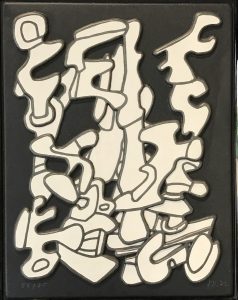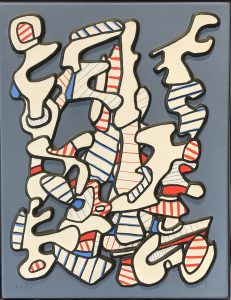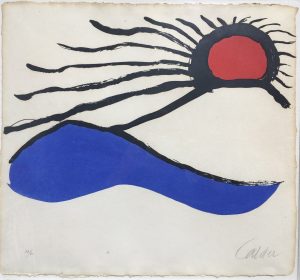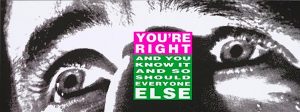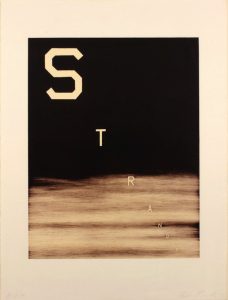
| Ed Ruscha Stranger 1983 Lithograph 30 X 22 1/2 in. Bon à Tirer (B.A.T.), from an Edition of 7 Pencil signed and annotated B.A.T. |
About the work:
“Huh? Wow!”
Language has often be inserted into visual art, yet no other artist uses it the way Ed Ruscha (roo-SHAY) does. His works are not pictures of words but words treated as visual compositions. “I like the idea of a word becoming a picture, almost leaving its body, then coming back and becoming a word again,” he once said.
Through his textual works, the artist has made his mark in a universe somewhere between Pop and Conceptual art. Over his six-decade-long career, critics have always had trouble classifying Ruscha because his oeuvre doesn’t fall into any predisposed category. As with Andy Warhol and Roy Lichtenstein, his East Coast counterparts, Ed Ruscha’s artistic training in Los Angeles was rooted in commercial art. Ruscha’s style and subject matter, however, and the deadpan humor with which he executed them truly set him apart.
This week’s Work of the Week! WOW! is Ruscha’s Stranger, dating from 1983. It is a prime example of the techniques and style of the artist, and is part of a series of artworks of words over sunsets and night skies (which many refer to as landscapes) that Rsucha started producing in the early 80’s.
This particular example is the B.A.T. (bon à tirer, which translates as “good to pull”). The B.A.T. is the final trial proof, the one that the artist has approved, telling the printer that this is the way he wants the edition to look. Bon à tirer means ready for press.
The edition size of this work is extremely small of only 7 pieces produced. To have the B.A.T. is very rare.
Set against the backdrop of a dark night, the word “stranger” is depicted in an all-caps lettering of Ed Ruscha’s own invention named ”Boy Scout Utility Modern.” The font is a boldface print type with squared-off curves. Inspired by the truncated edges of the Hollywood sign, the typeface is transformed as letters take the place of characters on a stage, hovering in middle distance with a three-dimensionality all their own. The result? Images that land somewhere between clarity and mystery, symbol and signifier, art and poetry.
In using “stranger” as a visual, with a newly created typeface, the artist glorified it as an object rather than a mere piece of text, thus dignifying “stranger” as an object, bestowed with iconic status.
The influence of Hollywood and advertising are ever-present in the work of this LA artist and Stranger is no exception. This is highlighted in the way Ruscha placed his subject, covering the overall space of the plane. His bold “stranger” floats on a vast background, and mimics the opening screen of movies or fleeting glimpses of roadside billboards that must catch an audience’s attention in one compelling instant. The cinematic perspective of “Stranger” has a dramatic, raked perspective which can be traced to classic Hollywood black-and-white films. This unique diagonal positioning of the letters is disruptive and encourages the viewer to look at something ordinary in a different light.
The words Ruscha chooses for his creations have a multiplicity of meaning, which push the viewer to consider each connotation of the word. What is the first meaning that comes to mind when faced with the word “stranger?” It can be read as either noun or adjective. This ambiguity adds to the power of the work. Ruscha has always insisted that he never intends to instruct his audience, there is no hidden agenda, leaving each of us free to interpret the word.
Ruscha has said that “Art has to be something that makes you scratch your head,” but it doesn’t need to take itself too seriously either. His works are as playful as they are thought provoking. According to the artist, there is a simple rule for distinguishing between bad and good art. Bad art makes you say ‘Wow! Huh?’ Good art makes you say ‘Huh? Wow!’ It’s a good rule. ‘Huh? Wow!’ is most revealing when considered in terms of Ruscha’s own work. When observing his work in that context, the ‘Huh? Wow!” is what makes his art so enduringly great.

